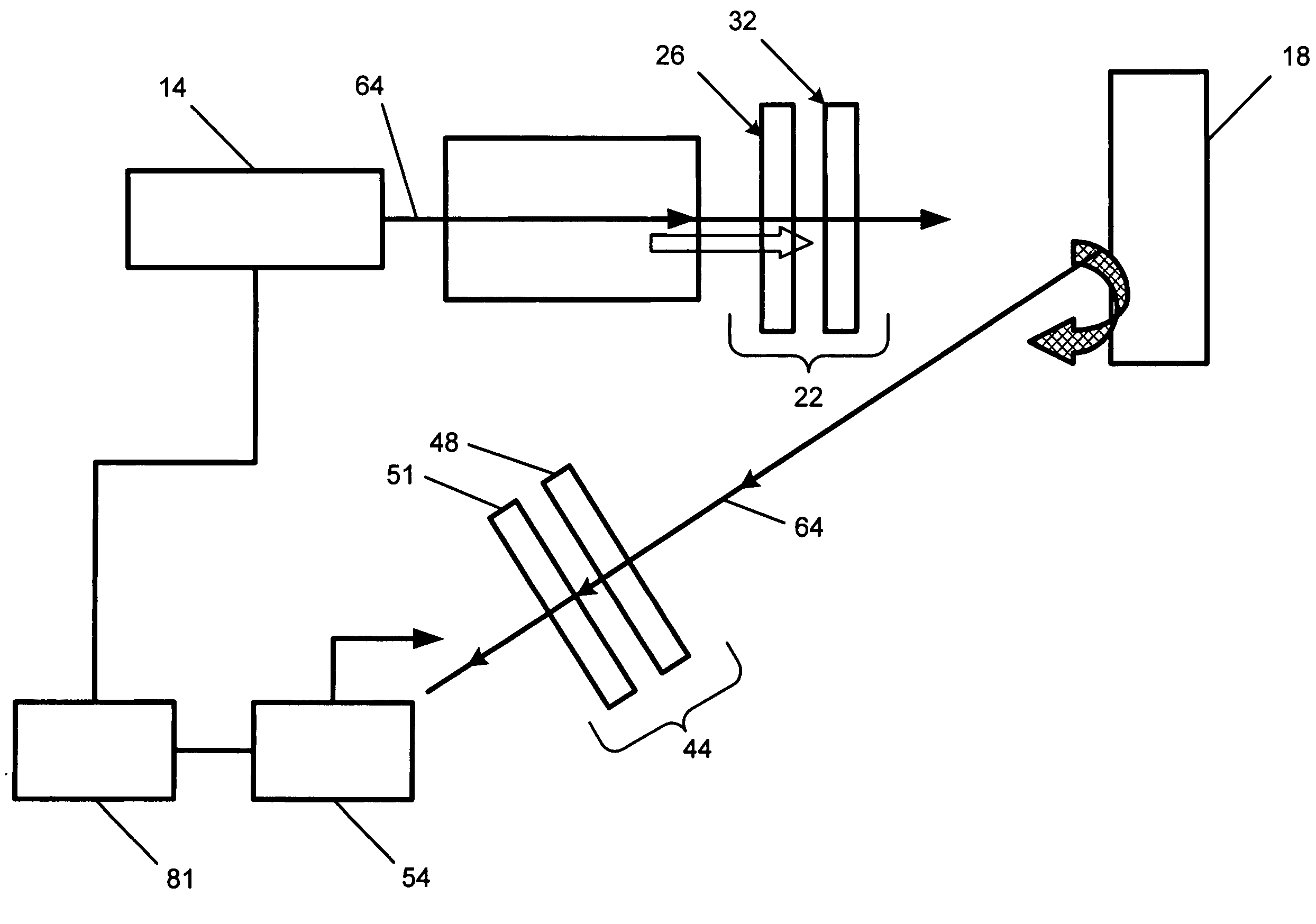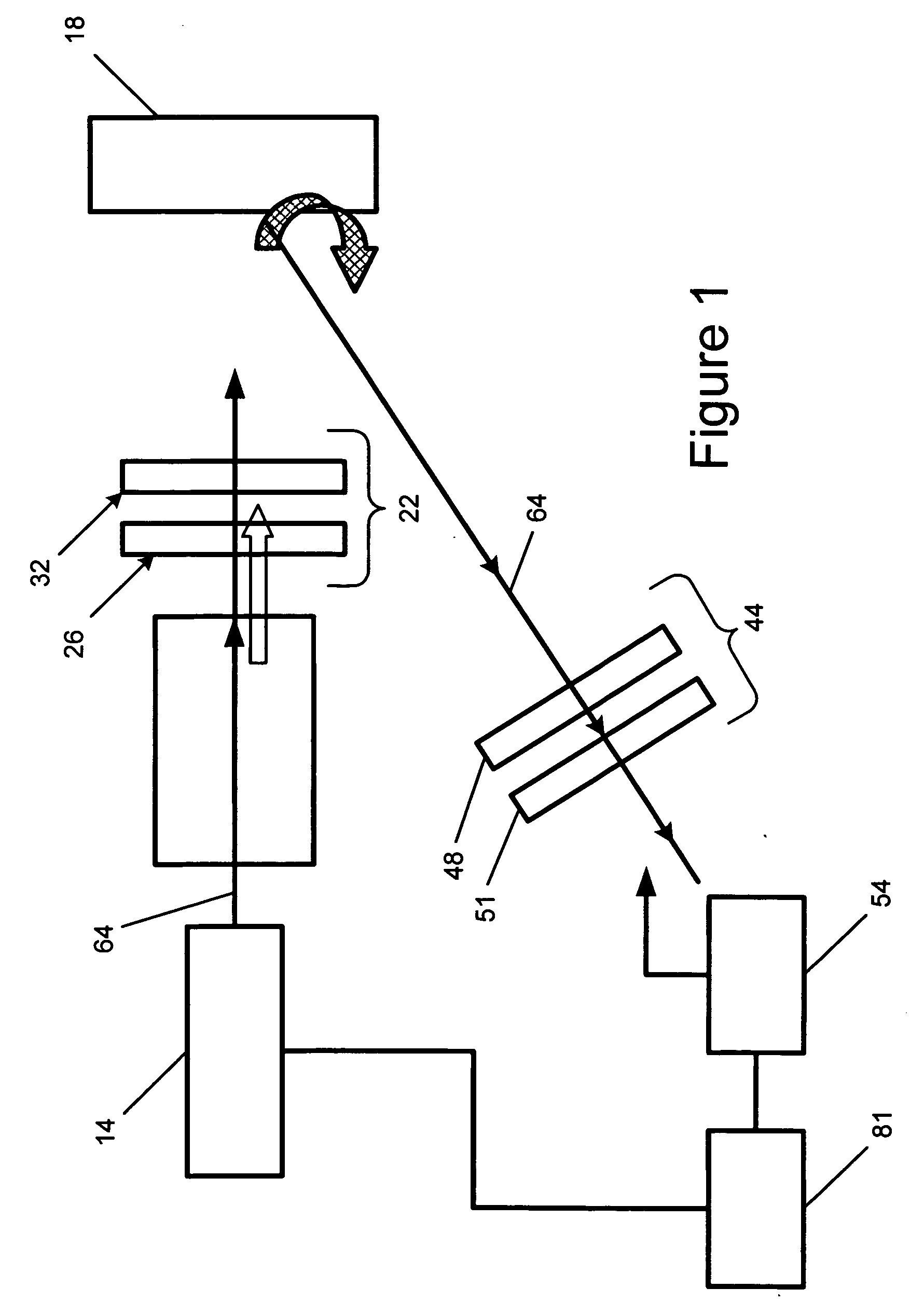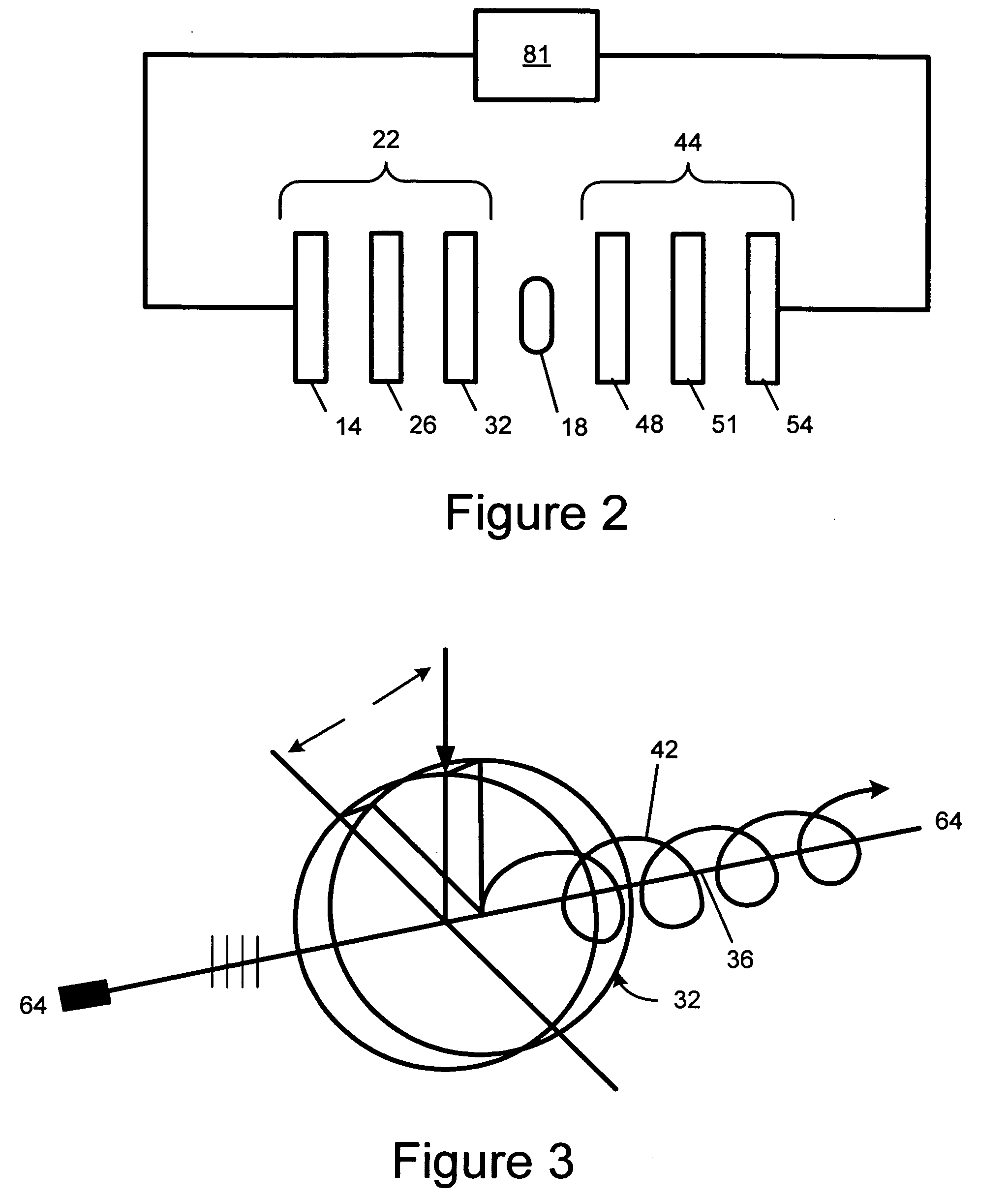[0011] In one embodiment, the present invention operates on lightwave multi-spectral, multi-fusion, multifunctional, Muller matrix / Stokes polarization parameters imaging principles. It is capable of interrogating targets, structures or samples with multiple wavelengths in order to form multi-spectral Mueller matrix / Stokes polarimetric images, obtained at different wavelengths, and then obtain their
spectral image difference (dual-energy
image subtraction). The use of two Mueller matrix polarimetric optical images, one produced from a
high energy (small
wavelength) and another from a low energy (large
wavelength)
laser beams, and the subsequent subtraction of these two images, can produce a high-contrast polarimetric energy image difference which eliminates or minimizes interfering background and clutters, or enhances the image process. Further
image enhancement can be achieved by subtracting Stokes polarimetric parameter images and the like, obtained at different optical wavelengths, such as degree of
linear polarization images (DOLP)'s, forming Stokes polarimetric parameter
spectral image differences.
[0012] These image images can be further manipulated, or combined, to enhanced the detection process. As a result, the present invention can provide both spectral and polarimetric information. Furthermore,
decomposition of the Mueller matrix images, at different optical wavelengths result in enhanced polarization-based amplitude contrast information (diattenuation property of the target), polarization-based phase contrast information (
birefringence property of the target), and
depolarization contrast, due to the formation of image differences using different distinct wavelengths. This data gives rise to Muller matrix polarimetric difference images obtained at different wavelengths, which contain polarization-based amplitude contrast and phase contrast information. These principles apply not only to the interrogation of multiple targets, aimed at the removal of interfering structures, but also single targets as well, giving rise to enhanced energy, spectral and polarimetric contrast, namely, polarization-based amplitude contrast,
depolarization intensity contrast, and phase contrast information.
[0013] The present invention relies in part on the following relationships: subtraction of two Mueller matrix polarimetric images Mλ1, Mλ2 of a target, structure and / or sample, obtained at least two distinct wavelengths λ1, λ2: Mλ2 − Mλ1[1] Mueller matrix of the target (M)D2 − D1[2] Diattenuation of the target (D)MDλ2 − MDλ1[3] Diattenuation matrix (MD)MRλ2 − MRλ1[4] Retardance matrix (MR)MΔλ2 − MΔλ1[5] Depolarizing matrix (MΔ)δλ2 −δλ1[6]
Birefringence (δ)Sjλ2 − Sjλ1[7]
Stokes Parameters (Sj), where j = 0, 1, 2, 3(DOP)λ2 − (DOP)λ1[8]
Degree of polarization (DOP)(DOLP)λ2 − (DOLP)λ1[9] Degree of
linear polarization (DOLP)(DOCP)λ2 − (DOCP)λ1[10]
Circular polarization (DOCP)(e)λ2 − (e)λ1[11] Ellipticity(η)λ2 − (η)λ1[12]
Azimuth(ε)λ2 − (ε)λ1[13] Eccentricity. (the order of the above operations can be reversed (i.e., λ1-λ2)), where subscripts 1 and 2 refer to any Mueller matrix matrices, in one instance polarimetric matrices, acquired through multi-spectral interrogation of the target with wavelengths λ1 and λ2, respectively, chosen from a spectrum λ1, . . . λn. Any number of Mueller matrices can be generated using the appropriate number of interrogating wavelengths (e.g., n Muller matrices can be generated using n interrogating wavelengths). By subtracting the 16 Mueller matrix elements of one matrix, acquired at one
wavelength, one by one from those acquired at one or more different wavelengths (e.g., m11λ2−m11λ1) and so on, significant information regarding the nature of the target can be achieved. In general, multiple wavelengths can be utilized to interrogate the target. Further exploitation and arithmetic manipulation of S0, S1, S2, S3, obtained at different wavelengths, such as subtraction, addition, multiplication, division or combination thereof, can enhance the image process, giving rise to Stokes polarization parameters differences and the like.
[0014] The foregoing relationships can be further manipulated to enhance
birefringence properties of the target; enhance diattenuation properties of the target; enhance
depolarization intensity contrast; maximize spectral and
energy information of the target and the surroundings; reduce interfering structures or background, leading therefore to: enhance detectability; target, structure and / or sample identification, discrimination, and classification; enhanced contrast and spatial resolution; specificity of targets embedded in turbid media, cluttered targets or samples embedded or surrounded by complex surroundings, low-contrast targets or samples, or under harsh illumination conditions such as very low / very strong light illumination or mixed light conditions, and background.
 Login to View More
Login to View More  Login to View More
Login to View More 


